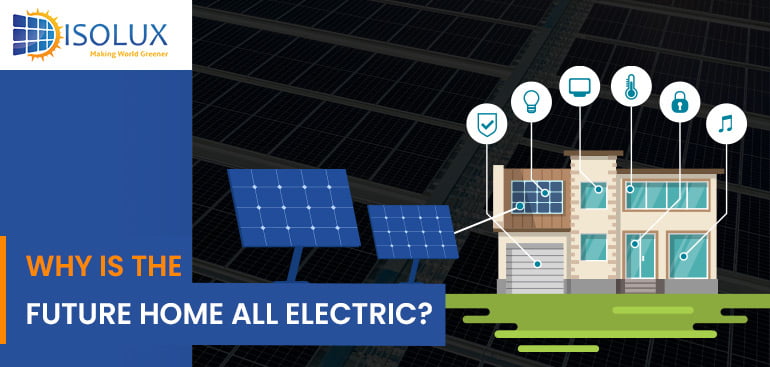What about our homes as our economy evolves toward increasing usage of renewable energy? What options do we have to make our homes greener and less expensive to run?
Solar is an excellent starting point. A high-quality rooftop solar panel system offers the infrastructure for your home to function on clean, renewable energy. Of course, once you have solar, you want to make the most of it.
By fully utilizing your solar energy, you reduce both your electricity expenses and your carbon footprint. The question is, what other improvements can you do to ensure that your home makes the most of its solar energy? And, to be practical, which of these changes should you begin with?
Why is the Future Home All-Electric?
Gas is no longer the primary source of energy in our houses. State governments around Australia are implementing regulations and rebate schemes to transition homes away from gas and toward solar-powered energy-efficient electric appliances. Historically, gas was one of the least expensive ways to heat our houses. However, as everybody who has a gas heating or hot water system knows, gas is no longer cheap. It’s becoming increasingly pricey. On the other hand, as more renewables enter the energy mix that drives our power grid, the cost of electricity is likely to reduce.
The use of gas as a fuel source is equally harmful to the environment. Because in Australia, gas is primarily mined by hydraulic fracturing, which can contaminate groundwater and endanger wildlife.
1. Switching from gas to electricity is a wise decision for households. The question is, what should you do first?
2. How much will it cost, and which adjustments will provide the quickest payback?
What are the Main “Energy Culprits” in our Homes?
To determine which adjustments to make first, identify your home’s top energy hogs.
Some statistics can help with this…
One of the most significant energy consumers and contributors to household emissions is gasoline. With 11% of overall energy consumption, space heating and cooling is the second largest energy user. Water heating is ranked second at 8%, followed by cooking at 2%.
When these figures are given, it is evident which components of our home need to be decarbonised:
1. Our cars
2. Cooling and heating
3. Heating systems
The good news is that there are environmentally friendly options for our transportation as well as our heating and cooling that are not only less expensive to operate but also improve our homes’ comfort, health, and safety.
You May Like: How Many Solar Panels Do I Need To Power My House
What Practical Steps Can You Take to Make the Switch to All-Electric?
Here is a list of some of the technologies that will electrify your home, making it smarter, more comfortable, less expensive to run, and carbon neutral.
The best part about all of these technologies is that they will run on free electricity from your solar power system – and most of them are already accessible!
1. Solar panel systems can be expanded in the future.
2. Battery storage enables you to be a member of an intelligent, interconnected electrical system.
3. Using your solar energy to charge an electric vehicle.
4. Heating and cooling are provided through reverse-cycle air conditioning.
5. Solar-powered heat pumps and hot water systems.
6. Electric appliances that are smart and can be operated remotely.
7. Home energy management control system.
Conclusion:
Get in touch with Isolux, if you’d like to know more about solar panel systems and how it helps to make a move to a well-planned electric home.
Read To Next Blog:




